A system of two blocks is placed on a rought horizontal surface as shown in figure below The coefficient of static and kinetic friction at two surfaces are shown A force F is horizontal applied on the upper block as shown . Let f1,f2 represent the frictional force between upper and lower surface of contact respectively and a1,a2 represent the acceleration of 3kg and 2kg block respectively
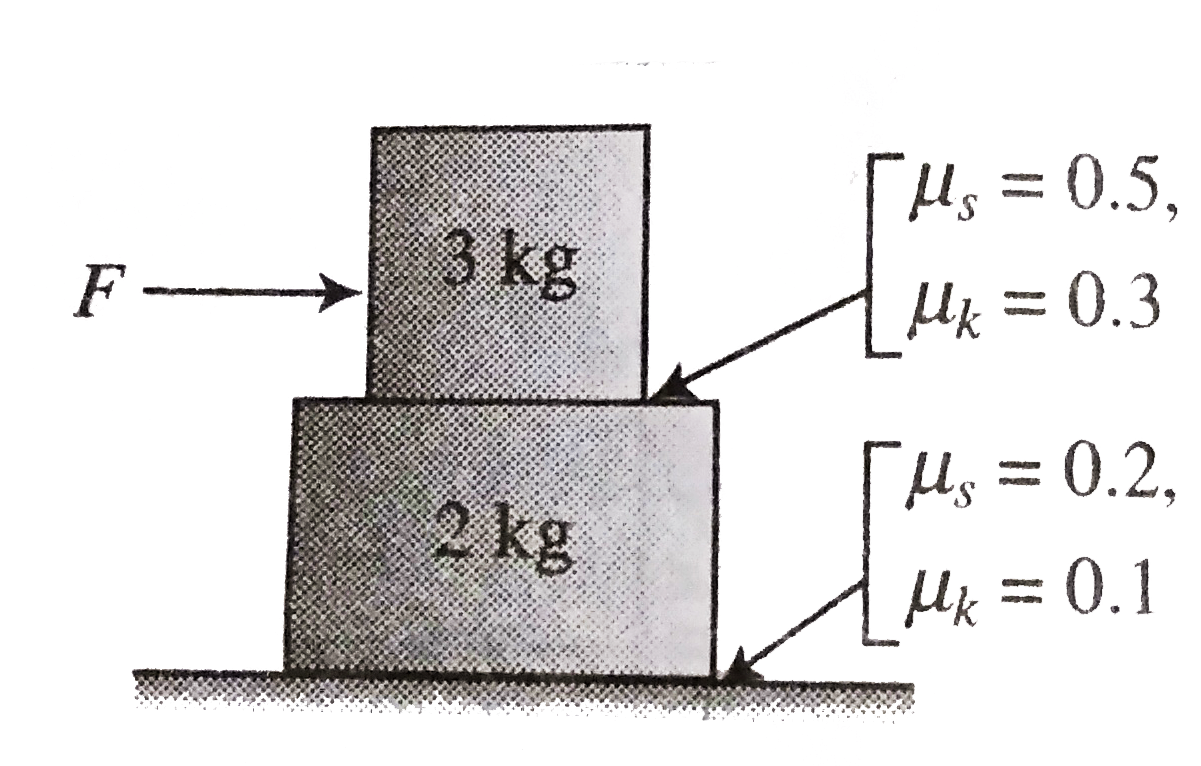
If F is gradually increasing forcethen which of the following statement (s) contact would be true?
For a particular value of F(<F0) there is no motion at any of the contact surface
The value of F0is 10N
The F increases beyond F0,f1 increases and contitaes to increase unit it limiting value
All of the above
The correct Answer is:d
From the data given we can find the limiting friction force for the two surface
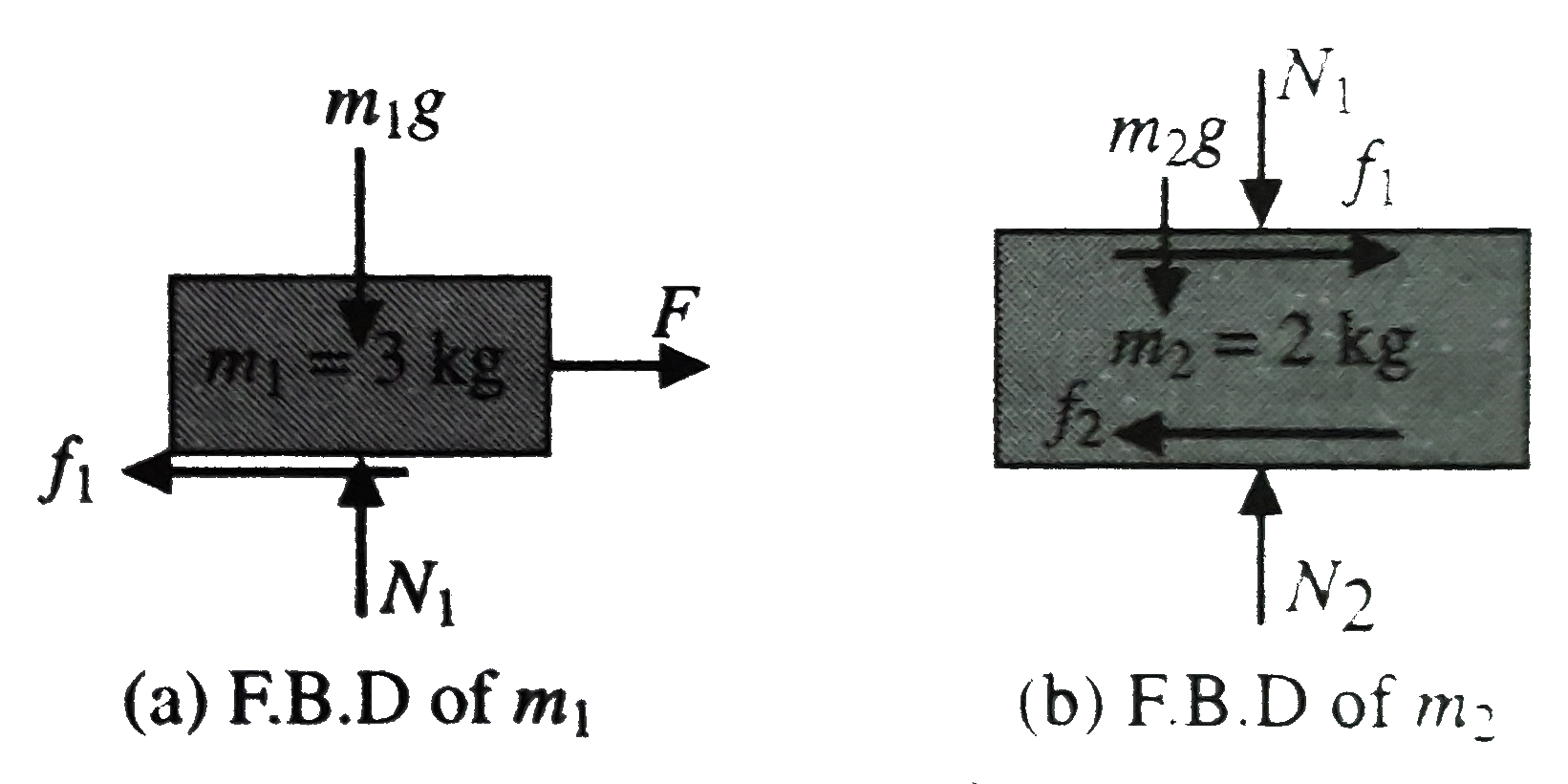
fL1=0.5×3×10=15N
fL2=0.2×5×10=10N
F<fL3
Both the blocks remain at rest and f1=F,f1=f1 and a1 and a2 For F>ft2 and F is less than a correct value anyF1 the motion stars at lower surface but both the blocks surface continue to move with starts same acceleration The friction on surface becomes kinetic in nature
Here a=a1=a2=F−ft25ms−2
F−f1=3a and f1−fk=2a
All these equation give
f1=2F−3ft25
for relative motion to start between two blocks f1>ft2F>30Nso minimum value to F is relative motion between blocks is 30N for f=12N,f1=7.8N
Topper's Solved these Questions
- NEWTON'S LAWS OF MOTION 2BOOK - CENGAGE PHYSICSCHAPTER - NEWTON'S LAWS OF MOTION 2EXERCISE - Integer
6 Videos
- NEWTON'S LAWS OF MOTION 2BOOK - CENGAGE PHYSICSCHAPTER - NEWTON'S LAWS OF MOTION 2EXERCISE - True And False
4 Videos
- NEWTON'S LAWS OF MOTION 2BOOK - CENGAGE PHYSICSCHAPTER - NEWTON'S LAWS OF MOTION 2EXERCISE - Multiple Correct
2 Videos
- NEWTON'S LAWS OF MOTION 1BOOK - CENGAGE PHYSICSCHAPTER - NEWTON'S LAWS OF MOTION 1EXERCISE - Integer
5 Videos
- PROPERTIES OF SOLIDS AND FLUIDSBOOK - CENGAGE PHYSICSCHAPTER - PROPERTIES OF SOLIDS AND FLUIDSEXERCISE - INTEGER_TYPE
2 Videos
Similar Questions
A block of mass 1kg is at rest on a rough horizontal surface having coefficient of static friction 0.2 and kinetic friciton 0.15, find the frictional forces if a horizontal force,
(a) F=1N (b) F=1.96N (c) F=2.5N is applied on a block
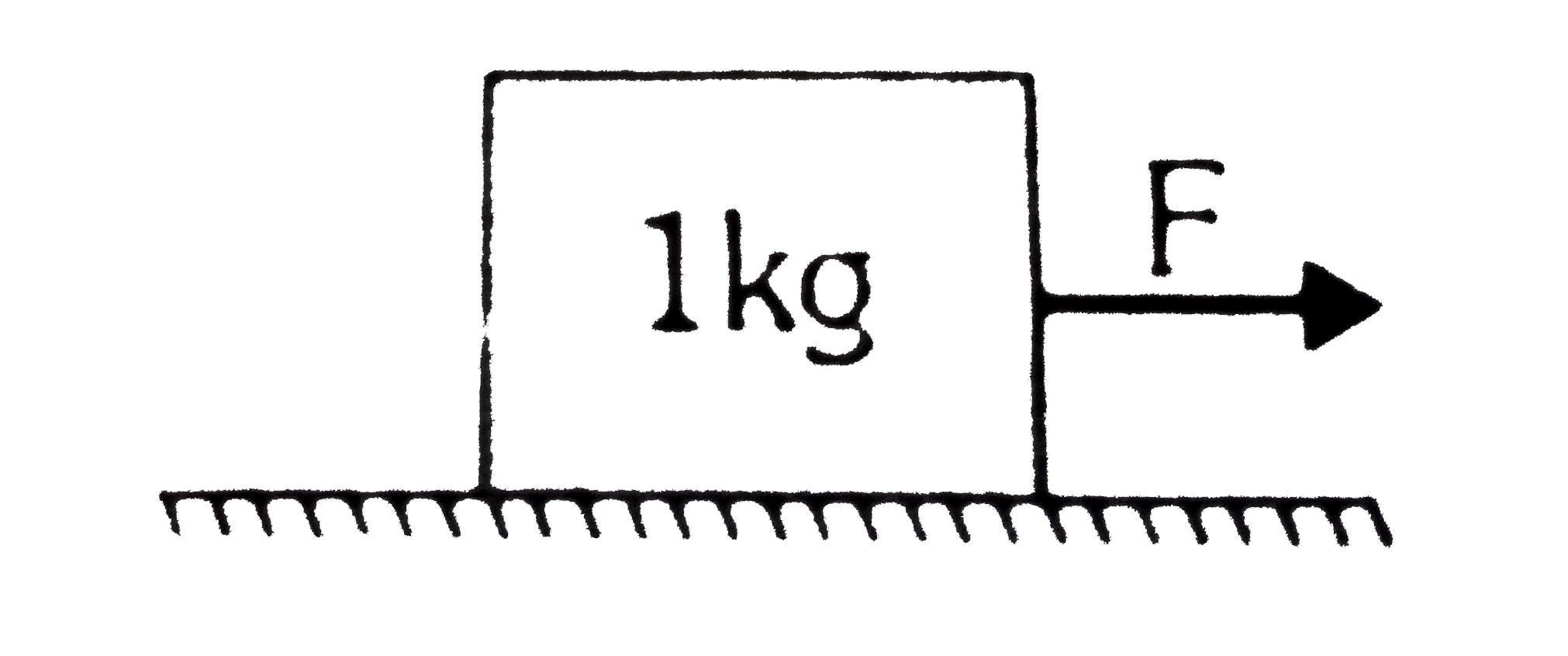
View SolutionA block is kept on a rough horizontal surface as shown. Its mass is 2 kg and coefficient of friction between block and surface (μ)=0.5. A horizontal force F is acting on the block. When

View Solution
Knowledge Check
A system of two blocks is placed on a rought horizontal surface as shown in figure below The coefficient of staic and kinetic friction at two surfaces are shown A force F is horizontal applied on the upper block as shown .Let f1,f2 represent the frictional force between upper and lower surface of contact respectively and a1,a2 represent the acceleration of 3kgand2kg block respectively
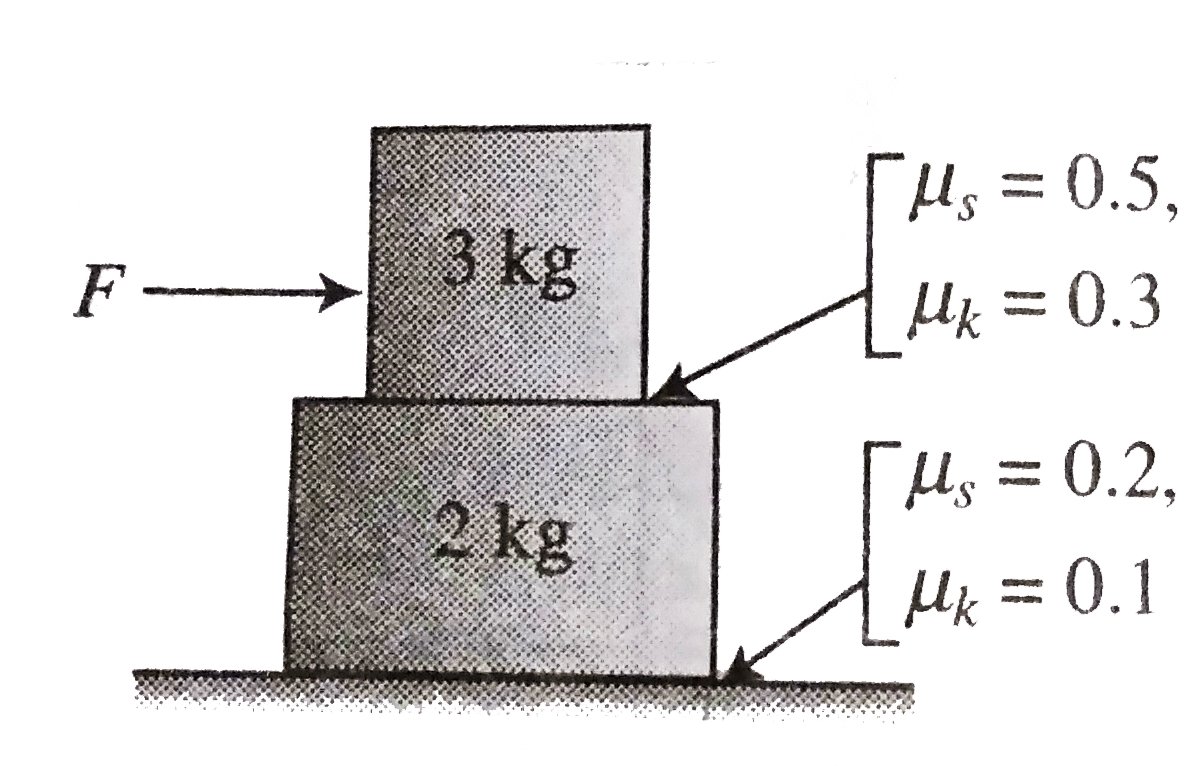
For F=12N mark the correct optionAf1=7.8N,f2=7.8N,a1=1.4ms−2,a2=0ms−2Bf1=7.8N,f2=10N,a1=a2=1.4ms−2,a2Cf1=7.8N,f2=5N,a1=a2=1.4ms−2Df1=7.4N,f2=5N,a1=a2=1.2ms−2A system of two blocks is placed on a rought horizontal surface as shown in figure below The coefficient of staic and kinetic friction at two surfaces are shown A force F is horizontal applied on the upper block as shown .Let f1,f2 represent the frictional force between upper and lower surface of contact respectively and a1,a2 represent the acceleration of 3kgand2kg block respectively
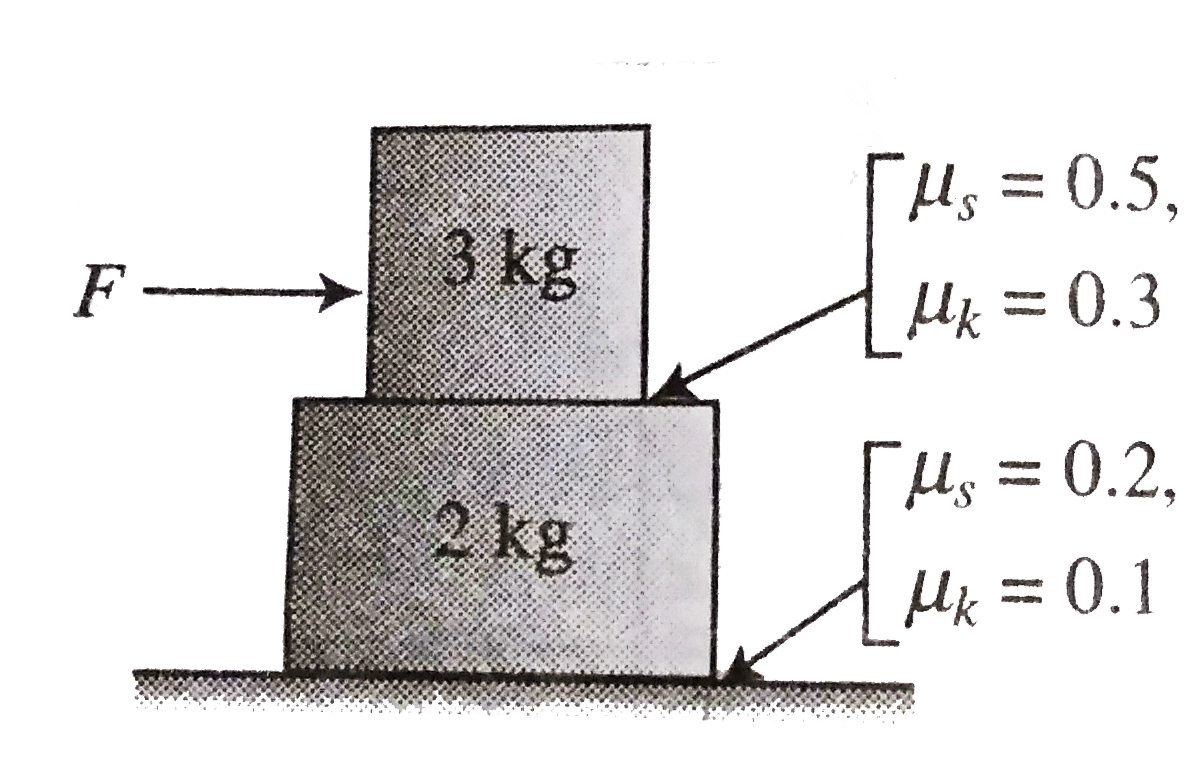
For relative motion to be there between two blocks the minimum value of F should beA15NB30NC25ND32NA block is kept on a rough surface and applied with a horizontal force as shown which is gradually increasing for zero. The coefficient of static and kinetic friction are 1/√3 then
 AWhen F is less then the limiting friction, angle made by net force on the block by the surfce is less then 30∘ with vertical.BWhen the block is just about to move, the angle made by net force by the surface on the block become equal to 30∘ with vertical.CWhen the block starts to accelerate, the angle made by net force by the surface on the block becomes constant and equal to 30∘ vertical.DThe angle made by net force with vertical on the block by the surface, depends on the mass of the block.
AWhen F is less then the limiting friction, angle made by net force on the block by the surfce is less then 30∘ with vertical.BWhen the block is just about to move, the angle made by net force by the surface on the block become equal to 30∘ with vertical.CWhen the block starts to accelerate, the angle made by net force by the surface on the block becomes constant and equal to 30∘ vertical.DThe angle made by net force with vertical on the block by the surface, depends on the mass of the block.
A block of mass 5kg is lying on a rough horizontal surface. The coefficient of static and kinetic friction are 0.3 and 0.1 and 10m/s−2. If a horizontal force of 50N is applied on the block, the frictional force is
View SolutionA block of mass 2kg is kept on the floor. The coefficient of static friction is 0.4 . If a force F of 2.5N is applied on the block as shown in the figure, the frictional force between the block and the floor will be.

View SolutionA block is sliding on a rough horizontal surface. If the contact force on the block is √2 times the frictional force, the coefficient of friction is
View SolutionA block of mass 2 kg is at rest on a floor . The coefficient of static friction between block and the floor is 0.54. A horizonatl force of 2.8 N is applied to the block . What should be the frictional force between the block and the floor ? ( take , g=10m/s2)
View Solution
A force F=2t is spplied at t=0 sec to the block of mass m placed on a rough horizontal surface. The coefficient of static and kinetic friction between the block and surface are μS and μk rspectively. Which of the following graphs best represents the acceleration vs time of the block(μS>μk)?
View Solution
